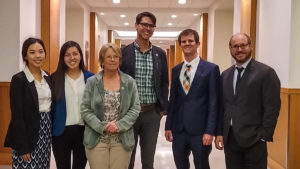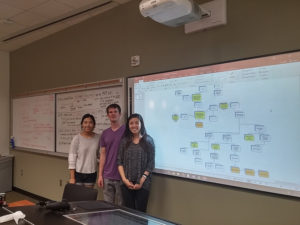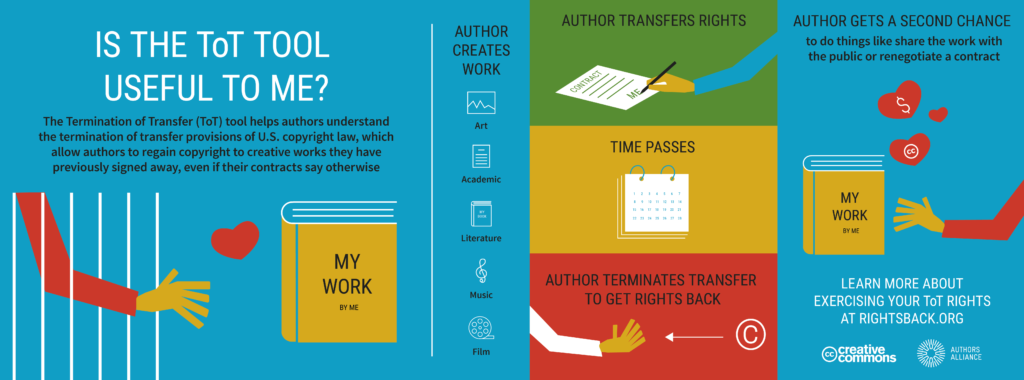What does termination of transfer mean?
Termination of transfer is a way for authors (or their family members) to reclaim rights to works that they previously signed away (after a statutorily specified amount of time). An author’s ability to exercise this option depends on many factors, including how old the work is, when the transfer agreement was signed, and whether the work was ever published.
Why would I want to get my rights back in a work? What can I do with the rights once I have them?
There are number of reasons you may wish to get your rights back in a work. Sometimes, you may be motivated by the work’s lack of performance as currently licensed, such as when your book is no longer being printed or isn’t selling well anymore. Or maybe your work is performing even better than expected and you now want leverage to renegotiate a long-outdated contract. You may even wish to open your work up to more readers through digital distribution or free licensing.
Whatever reason you have for getting your rights back, there are a variety of options available to you once you have them. You may relicense the work to another publisher or to the same publisher under different terms, you may release the work under an open access license, or you may self-publish the work either in a new print or digital edition. Success stories from authors who have received their rights back can be found here.
It is important to remember that terminating a transfer of rights is contract-specific only applies to the rights you initially contracted for. These rights will come back to you, though your publisher may retain certain rights to derivative works, international publications, etc. If you have contracted your rights out to multiple publishers, you will have to execute a termination for each contract.
How does termination work?
Congress has granted authors the right to terminate a transfer of their copyright through three subsections of the Copyright Act (§§ 203, 304(c), and 304(d)). Whether termination is available for a given work is determined according to a long list of factors; however, a work typically must be at least 35 years old to qualify for termination, and notice must be given at least two years in advance before the right is exercised. Works much older than 35 years may still be covered under these provisions, and notice can be given up to ten years before termination so these windows vary greatly. If you think a work may be eligible for termination, we encourage you to go to rightsback.org and use the tool to get a sense of how these windows are calculated. In order to effectively terminate a transfer, the author must first give notice to both the rightsholder and the U.S. Copyright Office. Check out Authors Alliance’s guidance and templates for submitting a notice of termination.
If your work is not old enough or does not otherwise qualify for termination, seeking a rights reversion instead may be your best option for getting your rights back.
How is termination different from reversion?
Reversion is a process through which an author can get back some or all of the rights she has signed away to a publisher, either through a contractual provision that permits her to regain rights in her book when certain conditions are met, or through voluntary negotiations if her contract does not have a reversion clause. To learn more about reversion, visit our Rights Reversion Portal.
The main difference between termination of transfer and reversion is that termination of transfer is a mandatory right granted by the U.S. Copyright Act, whereas reversion is a contractual commitment or a voluntary act by your publisher. Even if there is a clause in your contract that prohibits termination of transfer, you may still exercise this option. Reversion, on the other hand, is not always guaranteed.
Reversion can also occur at any time, whereas a work must be at least 35 years old in order for termination of transfers to apply. Thus, if your work is relatively new, reversion may be your best option for regaining rights in your work.
How can I determine if termination is an option for a given work?
Authors Alliance and Creative Commons have collaborated on a free and easy Termination of Transfer Tool, located at righstback.org, which educates users about termination of transfer and roughly estimates whether and when a work may be eligible for termination based on hypothetical scenarios. This tool is not legal advice, but may be helpful in an author’s initial information gathering before deciding whether termination is an option they are interested in pursuing. If you are not sure whether termination of transfer provisions apply to your work, you may want to seek legal advice from a licensed attorney.
What role does Authors Alliance play in this? Can Authors Alliance help me get my rights back?
Authors Alliance collaborated with Creative Commons to create the Termination of Transfer Tool which can be a useful resource for authors researching termination of transfer for the first time. Authors Alliance also provides guidance and templates for submitting a notice of termination. While Authors Alliance cannot represent any individual authors seeking termination rights, we will continue to educate authors about their options regarding their copyrights. Our mission is to assist authors who want to reach wider audiences by disseminating their work more broadly, and termination of transfer is just one of the tools in an author’s toolbox to achieve that goal.
Where can I learn more?
More in-depth resources about termination of transfer can be found at Rightsback.org, including detailed information about how to calculate notice windows, what types of contracts are covered by this statute, who can terminate, and where you can gather the information needed to use the tool. If you have any additional questions about termination, you can send them to info@rightsback.org.
For more information about what to do once you have successfully gained your rights back, we encourage you to visit our Open Access Portal or our Rights Reversion Portal, which discuss how to use your copyright effectively to maximize your readership.


 Vanessa Proudman, Director of SPARC Europe, framed the workshop looking at the current context, goals and challenges with rights management. She shared
Vanessa Proudman, Director of SPARC Europe, framed the workshop looking at the current context, goals and challenges with rights management. She shared  Brianna Schofield, Executive Director of Authors Alliance,
Brianna Schofield, Executive Director of Authors Alliance,  Diane Peters, General Counsel of Creative Commons,
Diane Peters, General Counsel of Creative Commons,  U.S. copyright law gives an author the right, under certain conditions, to terminate a copyright transfer or license that the author granted decades earlier, as
U.S. copyright law gives an author the right, under certain conditions, to terminate a copyright transfer or license that the author granted decades earlier, as 
 Several of these questions were derived from the Copyright Act, such as whether the copyright was assigned through a last will and testament. If so, it cannot be terminated. Others depended on factors found in important court decisions, such as CCNV v. Reid, which provided guidance as to whether a given work is a “work made for hire” and thus ineligible for termination. Our “map” of termination law became a flowchart the length of a large UCI Law classroom.
Several of these questions were derived from the Copyright Act, such as whether the copyright was assigned through a last will and testament. If so, it cannot be terminated. Others depended on factors found in important court decisions, such as CCNV v. Reid, which provided guidance as to whether a given work is a “work made for hire” and thus ineligible for termination. Our “map” of termination law became a flowchart the length of a large UCI Law classroom. If people think of “international copyright law” at all, they probably think of the IP chapters in international trade agreements. These agreements are mostly about economic links between groups of countries. Protecting copyrights, along with other kinds of IP, is the quid pro quo for access to commodity markets and markets for services. The Agreement on Trade Related Aspects of Intellectual Property (TRIPS) brought copyright squarely into the world trade regime with the requirement that World Trade Organization members must protect copyrights up to certain minimum standards.
If people think of “international copyright law” at all, they probably think of the IP chapters in international trade agreements. These agreements are mostly about economic links between groups of countries. Protecting copyrights, along with other kinds of IP, is the quid pro quo for access to commodity markets and markets for services. The Agreement on Trade Related Aspects of Intellectual Property (TRIPS) brought copyright squarely into the world trade regime with the requirement that World Trade Organization members must protect copyrights up to certain minimum standards. The U.S. Copyright Act is clear: Authors have a right to terminate a transfer of their copyrights 35 years after they have signed on the dotted line.* That right to terminate cannot be waived, nor is there any way to “contract around” it. It does not matter if the contract purports to assign the copyright for “the entire term of copyright” or “in perpetuity” or if the contract prohibits any attempts at termination. Why did Congress include this significant, unwaivable right in its comprehensive revision of the Copyright Act?
The U.S. Copyright Act is clear: Authors have a right to terminate a transfer of their copyrights 35 years after they have signed on the dotted line.* That right to terminate cannot be waived, nor is there any way to “contract around” it. It does not matter if the contract purports to assign the copyright for “the entire term of copyright” or “in perpetuity” or if the contract prohibits any attempts at termination. Why did Congress include this significant, unwaivable right in its comprehensive revision of the Copyright Act?
